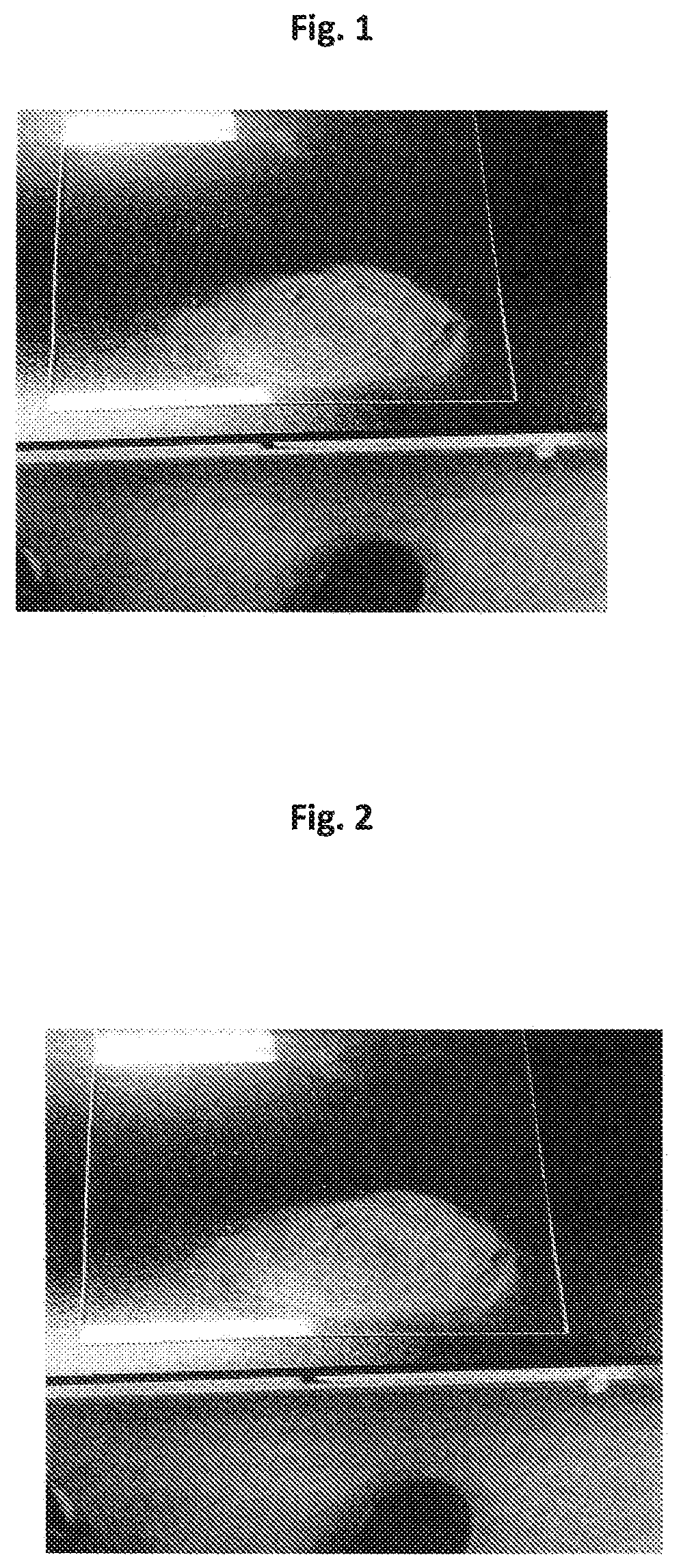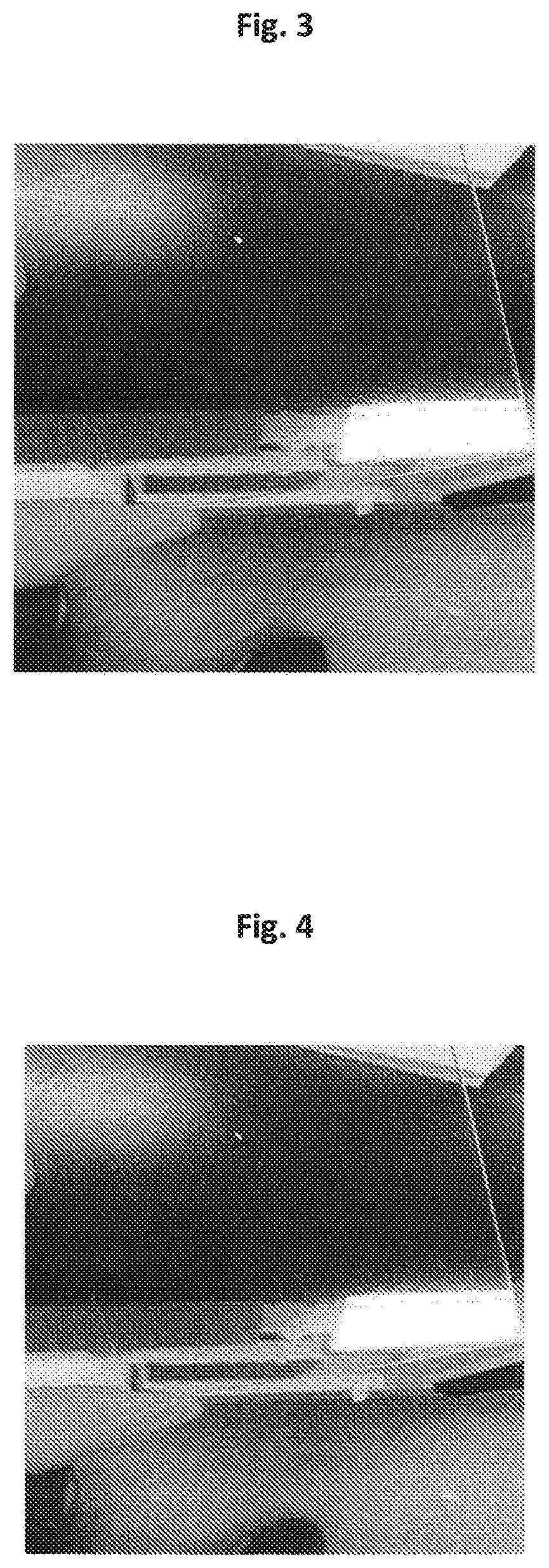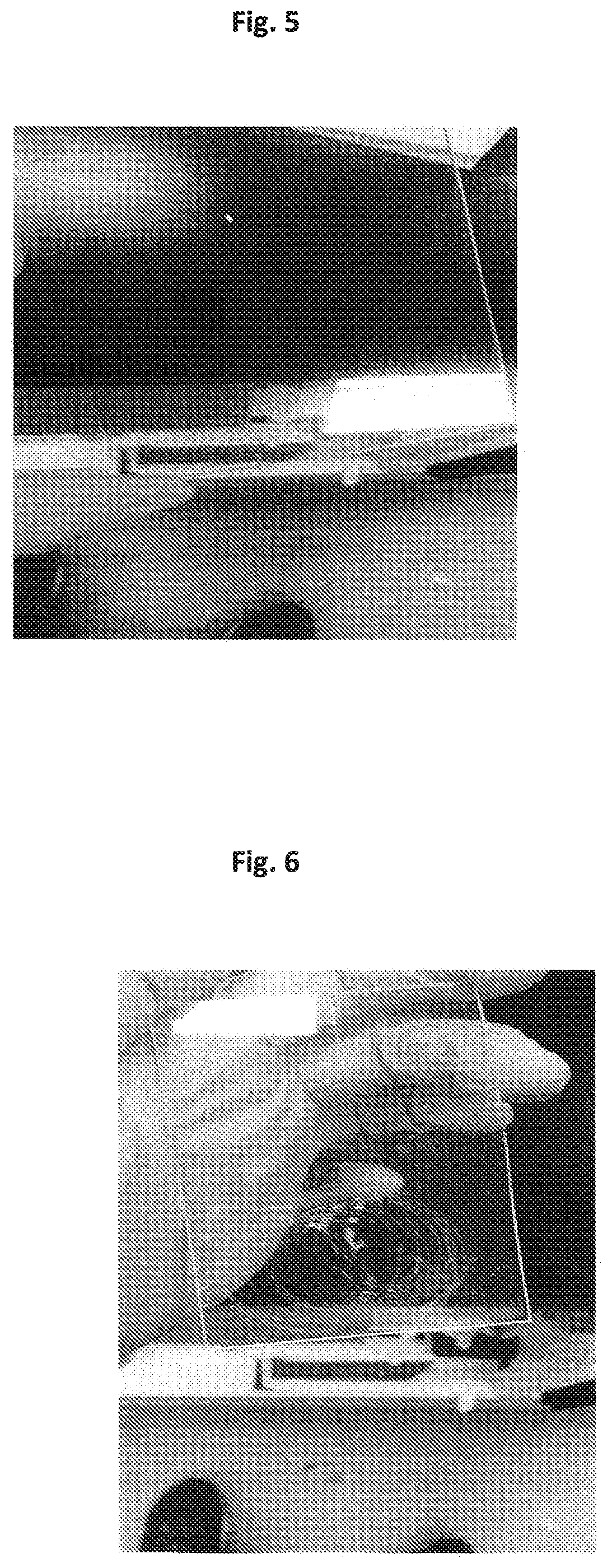Headlight lens cleaning and restoring compositions and methods of use thereof
a technology of headlight lens and polycarbonate, which is applied in the direction of vehicle maintenance, vehicle cleaning, detergent compounding agents, etc., can solve the problems of oxidation of headlights, fading of clear coat, and external fixtures of automobile headlights (polycarbonate based) susceptible to environmental damage, so as to reduce the amount of time and reduce the amount of discoloration contaminants , the effect of effective removal of discoloration contaminants
- Summary
- Abstract
- Description
- Claims
- Application Information
AI Technical Summary
Benefits of technology
Problems solved by technology
Method used
Image
Examples
example 1
[0098]A cleaning composition was prepared by mixing acetone (55.55 wt %) and propylene glycol n-propyl ether (44.45 wt %).
[0099]A restoring composition (i.e., clear coat) was prepared by mixing hexyl alcohol (51.33 wt %), a silicone resin (i.e., Dow CorningRSN-0217 flake resin) (13.67 wt %), and diethylene glycol monobutyl ether (35 wt %).
[0100]To remove oxidation and contaminants from a headlight, the cleaning composition was loaded onto a pulp based wipe, preferably at 1:2 to 1:3 wipe to cleaning composition. The wipe was folded twice or thrice, and the surface of the headlight was wiped back and forth in a desired direction (preferably horizontal) with firm even pressure.
[0101]As soon as resistance was felt while applying the cleaning composition, a cleaner side of the wipe was switched to and continued wiping with firm even pressure back and forth. The process was continued until no more grime or yellowing was seen on the wipe. As acetone is a fast evaporating solvent, working o...
example 2
[0103]A cleaning composition was prepared by mixing dimethyl carbonate (about 37 wt %) and propylene glycol n-propyl ether (about 63 wt %).
[0104]A restoring composition (i.e., clear coat) was prepared by mixing hexyl alcohol (51.33 wt %), a silicone resin (i.e., Dow CorningRSN-0217 flake resin) (13.67 wt %), and diethylene glycol monobutyl ether (35 wt %).
[0105]To remove oxidation and contaminants from a headlight, the cleaning composition was loaded onto a pulp based wipe, preferably at 1:2 to 1:3 by weight wipe to cleaning composition. The wipe was folded twice or thrice, and the surface of the headlight was wiped back and forth in a desired direction (preferably horizontal) with firm even pressure.
[0106]As soon as resistance was felt while applying the cleaning composition, a cleaner side of the wipe was switched to and continued wiping with firm even pressure back and forth. The process was continued until no more grime or yellowing was seen on the wipe.
[0107]To restore the clea...
PUM
| Property | Measurement | Unit |
|---|---|---|
| flash point | aaaaa | aaaaa |
| temperature | aaaaa | aaaaa |
| flash point | aaaaa | aaaaa |
Abstract
Description
Claims
Application Information
 Login to View More
Login to View More - R&D
- Intellectual Property
- Life Sciences
- Materials
- Tech Scout
- Unparalleled Data Quality
- Higher Quality Content
- 60% Fewer Hallucinations
Browse by: Latest US Patents, China's latest patents, Technical Efficacy Thesaurus, Application Domain, Technology Topic, Popular Technical Reports.
© 2025 PatSnap. All rights reserved.Legal|Privacy policy|Modern Slavery Act Transparency Statement|Sitemap|About US| Contact US: help@patsnap.com



